People use emails to connect with friends and relatives. Businesses use it to connect with their customers.
Despite the rise of social media over the past years, email is 40 times more effective at acquiring new customers than Facebook or Twitter, according to McKinsey.
Email delivers the highest ROI for marketers.
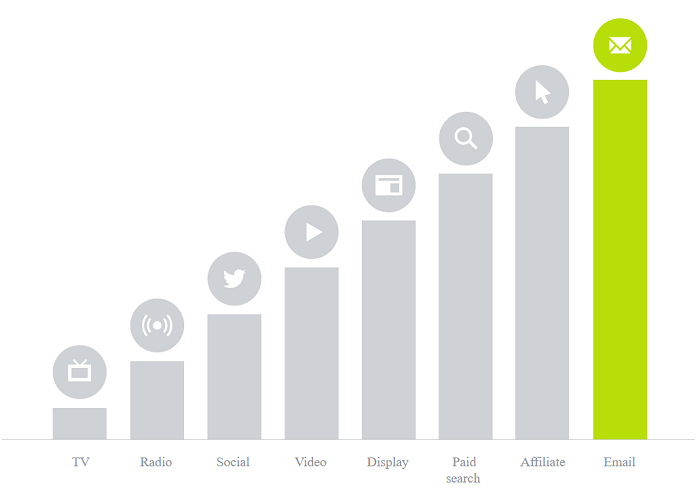
72% of people prefer to receive promotional content through email. 17% prefer social media. So, you should be doing email marketing.
Email is a powerful way to connect with prospects.
In this article, I will reveal 17 effective email marketing strategies you should be using to generate more sales for your business.
1. Give something valuable away
Popular bloggers often brag about how many emails they’ve collected.
You’ll see something like this:
“10,000 subscribers and counting.”
It’s not because they like the numbers. Huge numbers like that grow their business. In fact, the value of websites these days is measured by how many subscribers they have.
The higher the subscribers count, the higher the value of the site.
The truth is that people don’t give their emails to anyone. They don’t give their emails because they like your website.
Except you give them a strong reason to sign up.
The reason should be so powerful that people can’t wait to give you their email addresses.
Offer something so enticing that leaves web users with no choice but to sign up for your list.
That thing must be valuable. That thing could be worth, at least, $1,000 in actual price value depending on the industry you are in.
Ramit Sethi is one of the smartest digital marketers I know.
He asks his visitors to take a free quiz that will tell them their earning potential.
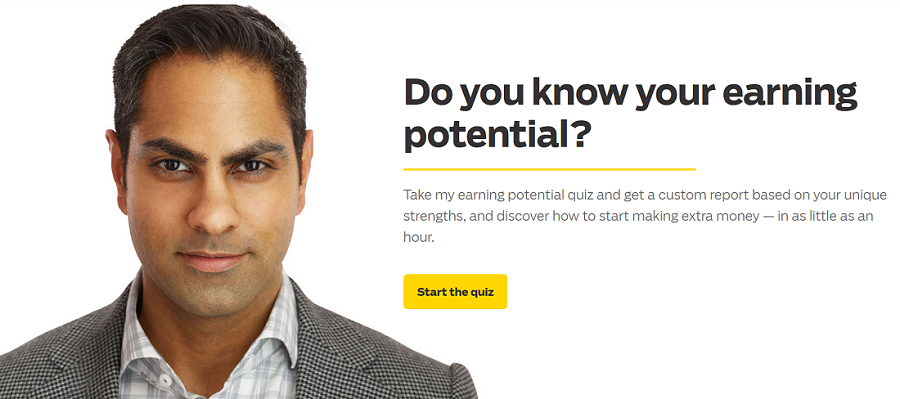
Then after taking the quiz, you are asked to give your name and email to receive the quiz results.
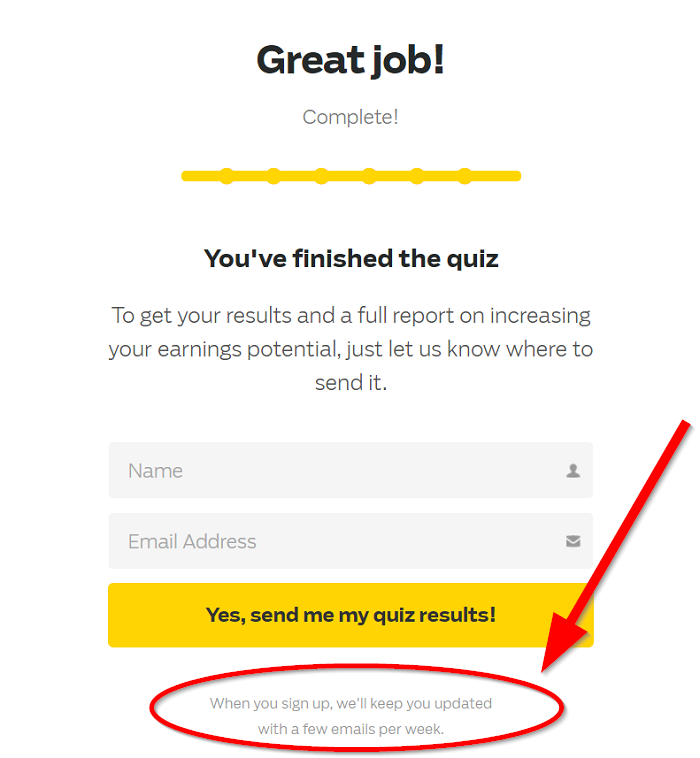
Wow. You are nicely told you will start receiving a few emails from Ramit per week.
2. Optimize your email messages for mobile experience
Mobile is the future of everything.
The death of desktop is looming. Desktop sales have been dropping for years now.
269.7 million computers were shipped in 2016. This is 6.2% lower than the number sold in 2015.
People are not replacing their old PCs. Instead, they just use their tablets or smartphones.
54% of emails are now opened on mobile. Desktop represents just 19% of all email opens.
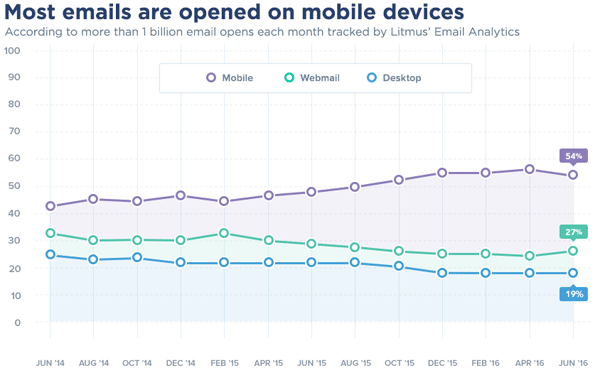
If your email messages are not optimized for mobile, people will delete them. That reduces your chances of converting subscribers into customers.
Imagine you receive an email message that looks like this:
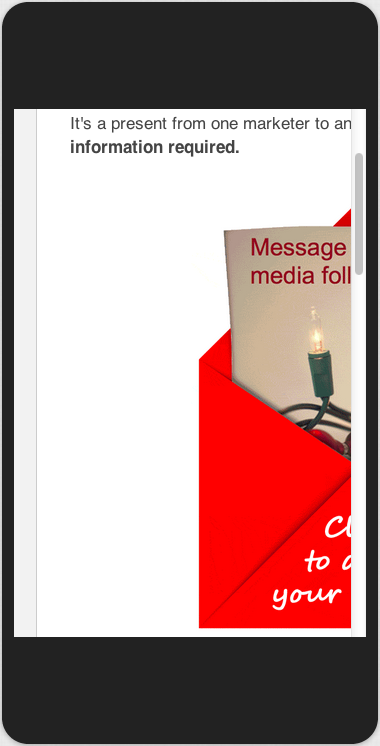
And you receive an email that looks like this:
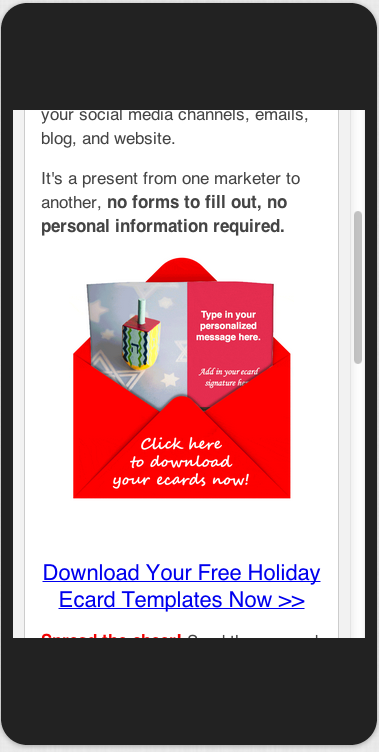
Which one are you more likely to read?
I bet you are more likely to read the second email because it fits your screen.
3. Re-engage inactive subscribers
It’s often less expensive to target existing customers than new ones.
The same thing applies to email marketing.
It’s easier to engage current subscribers than it is trying to win new subscribers. Present subscribers know a lot more about you than new ones.
Nearly all email lists will have some inactive subscribers. It’s normal when some percentage of your subscribers aren’t engaging with your messages.
Those inactive subscribers can still become customers and even refer their friends if you do the right thing.
First, you need to define your own “inactivity.”
For some marketers, a subscriber is inactive if they haven’t opened their emails in the past six months.
Some marketers will tell you their “inactive” period is three months. For others, even less or more.
Between three to six months is a good timeframe.
After defining your “inactivity” period, it’s time to start engaging inactive subscribers.
How do you do that?
You can re-engage inactive subscribers by conducting polls and surveys. Promise them something in advance and make sure you send free gifts as a reward for completing the polls or surveys.
That will increase conversions. The gift will motivate them to act.
Polls and surveys also enable you to learn more about inactive subscribers.
Airbnb email specialist, Lucas Chevillard revealed that they send polls like this to learn more about their subscribers:
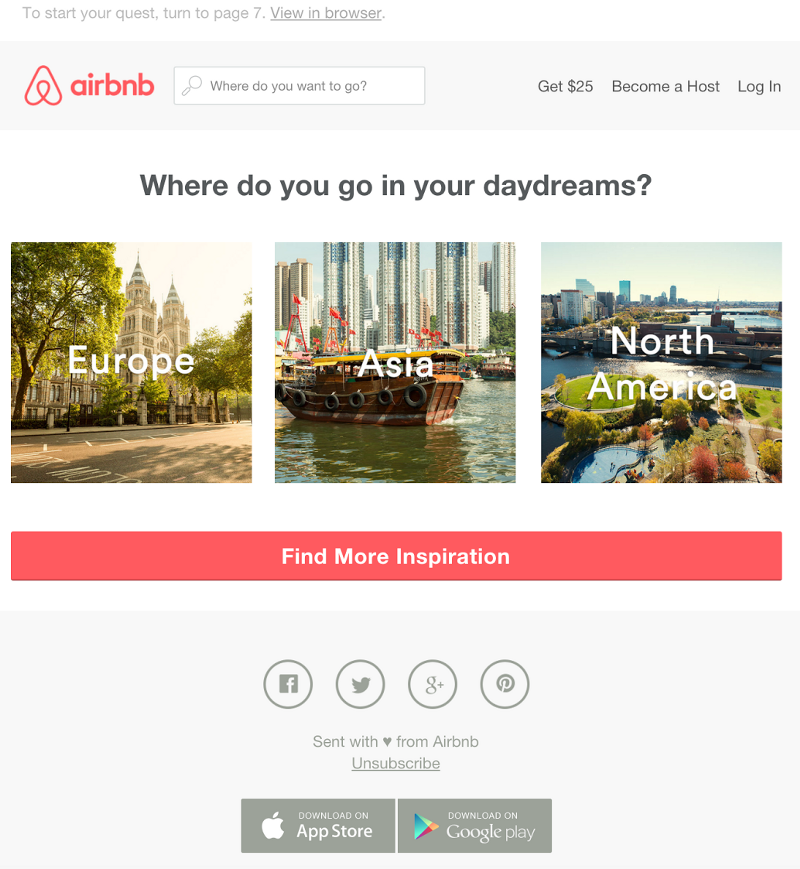
Another effective way to get inactive subscribers active again is to give them free gifts without asking anything.
That would be expensive?
Well, Pinkberry does that.
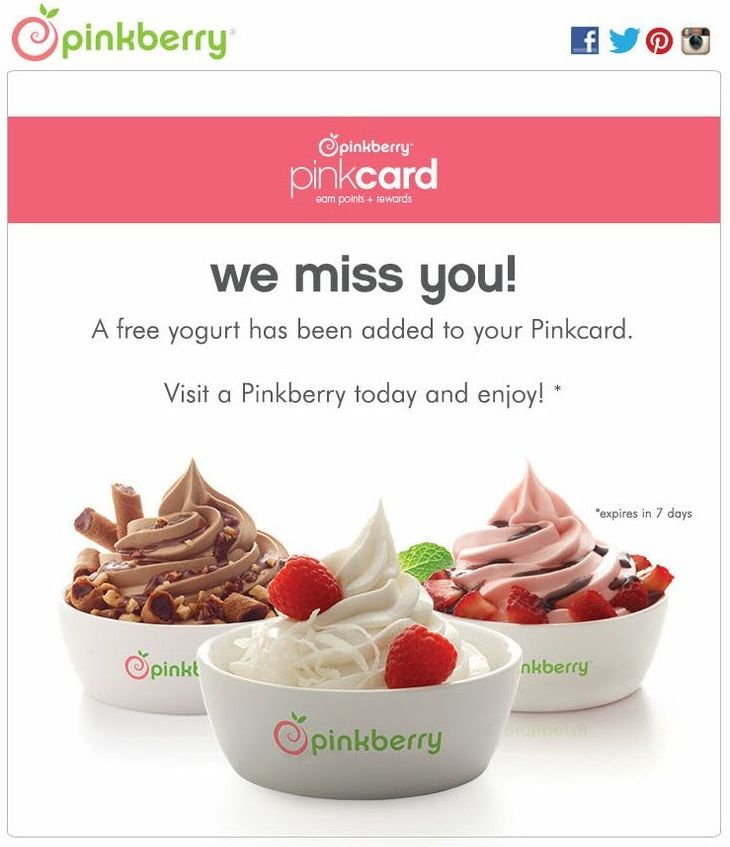
Gifts like this are hard to ignore.
4. Segment your subscribers
Segmenting your email lists helps you get better open and click rates.
Why does email segmentation work?
If you have 1,000 people subscribed to your email lists, most of them have different needs and interests.
Let’s assume you have a marketing blog and you’re collecting emails.
Some subscribers would be much more interested in learning content marketing than search engine optimization. While some would be interested in social media marketing.
Even if you have a social media marketing blog, some subscribers would be interested in learning about Facebook than Twitter.
Even if you have a blog about Facebook marketing, some subscribers will be interested in learning Facebook advertising than Facebook organic marketing.
You can’t satisfy all your subscribers with a piece of content because they have different interests.
Email segmentation makes it possible to keep, at least, 80% of your subscribers happy.
How?
It helps you send content that each subscriber is only interested in reading.
MailChimp conducted a research on about 2,000 MailChimp users who sent about 11,000 segmented campaigns to almost 9 million recipients.
They found that segmented email campaigns generated 14.31% more opens, 10.64% more unique opens, and 100.95% more clicks than non-segmented email campaigns.
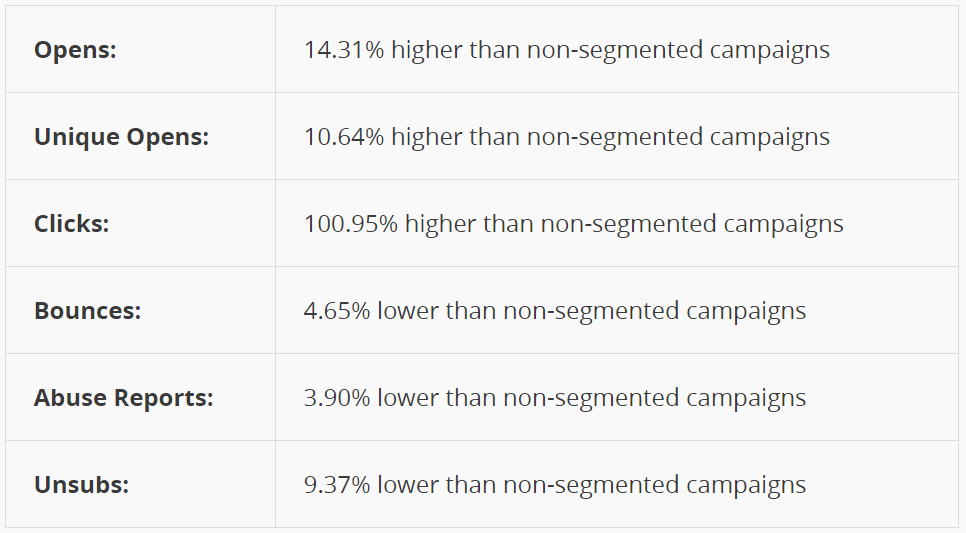
5. Use automation
According to a report by Forrester, B2B marketers who use marketing automation increase their sales pipeline by an average of 10%.
Email automation is a subset of marketing automation.
Email automation will not only convert leads into prospects. It will delight existing customers and encourage them to make use of your product.
This will boost upsells, evangelism, and additional purchases.
There are a lot of good email automation platforms like EngageBay, HubSpot, Act-On, and Pardot.
6. Personalize your emails
Personalizing your email messages will increase engagement.
It will make your emails more relevant and useful to customers.
Personalized emails deliver 6x higher transaction rates, but 70% of brand do not use them.
If you are not personalizing your marketing emails, you are missing a lot of sales opportunities.
Personalization is not just about using people’s names in messages. It is way beyond that.
Below is a perfect example of email personalization from JetBlue. They know they’ve been “emailing for 365 days now.”
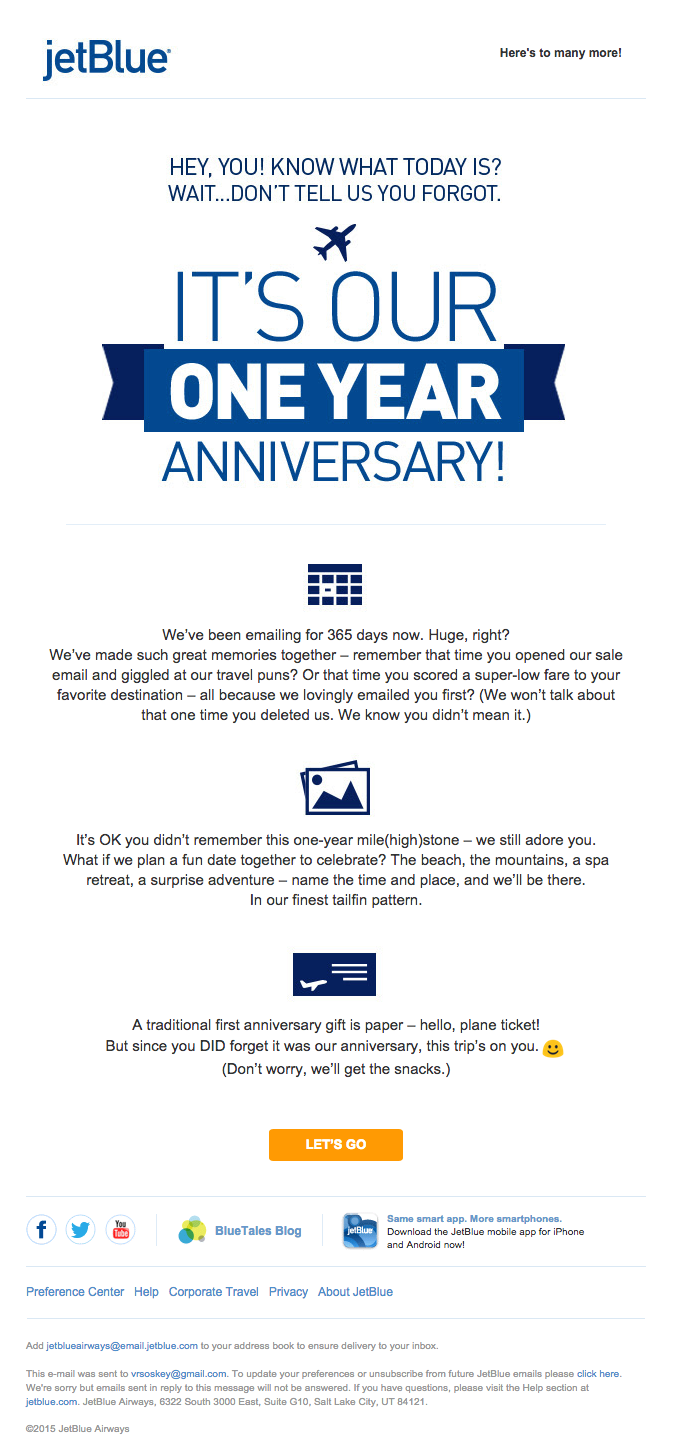
7. Occasionally send out exclusive content
Exclusivity is a powerful marketing tactic that many brands have been using for years.
Apple uses it. That is one of the reasons it’s the most valuable company in the world despite the fact that it only has a tiny market share in the smartphone industry.
With exclusivity, you can get more email subscribers and generate more sales.
The idea can be creating an exclusive content available only to your email subscribers.
It can also be creating a product that is only open to your email list.
You can use exclusivity to build a deeper connection with your email subscribers.
8. A/B Test everything. Button, Color, Design, and Format.
Digital marketers A/B test their website designs, Facebook ads, Google AdWords ads, and landing pages. The same thing applies to email marketing.
You should continually be a/b testing your email messages.
Here are the things to a/b test:
- Call to action (Example: “Buy now” vs. “Give us a try”)
- Subject lines
- Testimonials (or no testimonials)
- The layout of the message (single column or two column or different placements for different elements)
- Personalization
- Body test
- Headline
- Closing text
- Images
- Test different offers
Note: Don’t test the whole list at once.
Pick one or two elements and see how that improves conversions before testing the next two or more elements.
It’s important you know why you’re testing before you do a test.
You may test the headline for open rates. You may test the image for conversion rates. And you may test the call-to-action text for click-through rates.
For example, ActiveNetwork, a large event management software provider decided to a/b test the tone of their message.
Here’s copy A:
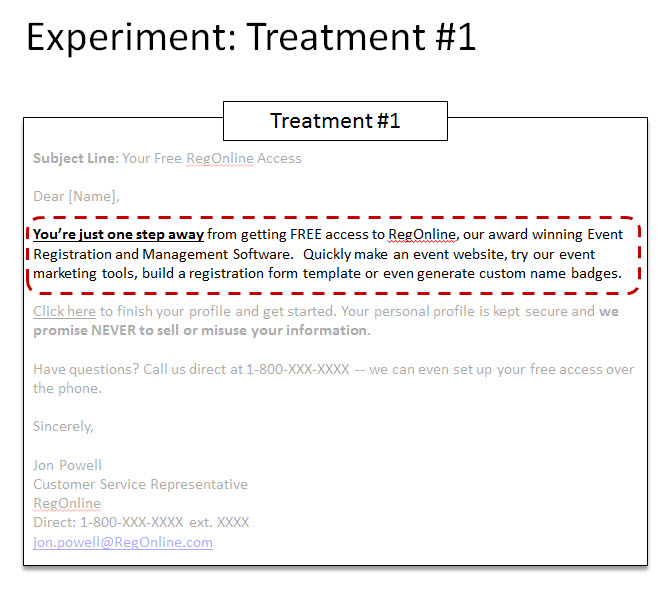
And here’s copy B:
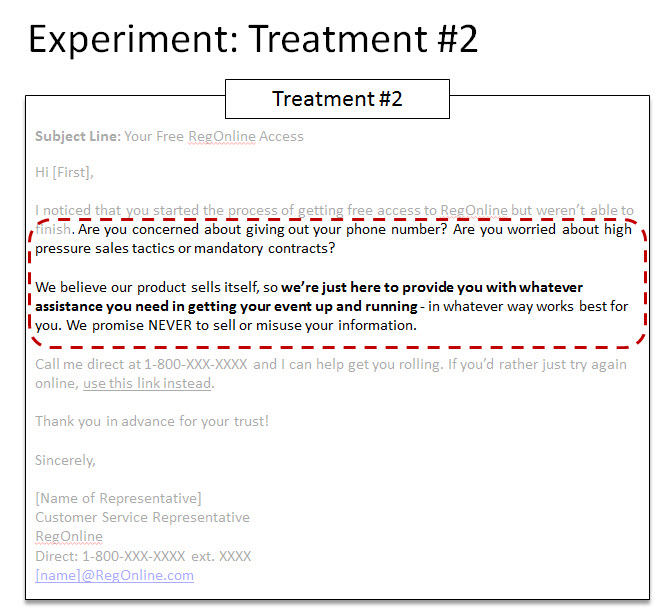
Which copy won?
The second copy used low-pressure language and friendly tone and increased lead inquiries by an impressive 349%.
9. Add urgency to your emails
If your emails put recipients under pressure to act, you’ll convert more subscribers into customers.
For a long time, digital marketers have been using phrases like “Act now,” “Hurry,” and “Only a few items left” to convert web users.
Urgency is a key feature of the human brain. Urgent situations make us act very quickly.
Amazon uses urgency a lot.
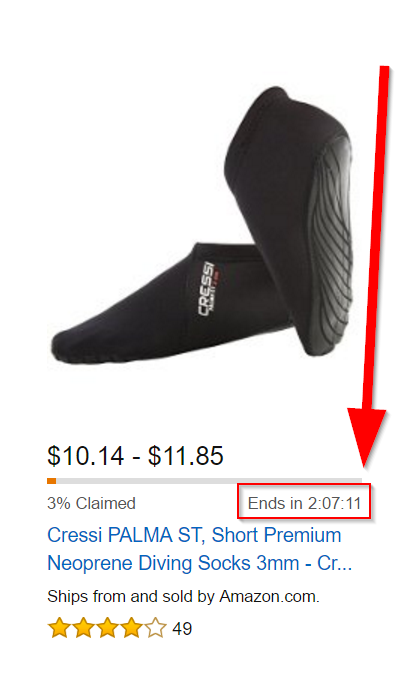
One of the most effective ways to create urgency in emails is to set a deadline for your offer.
For example, Ramit Sethi uses deadlines in his emails.

You can create urgency through scarcity.
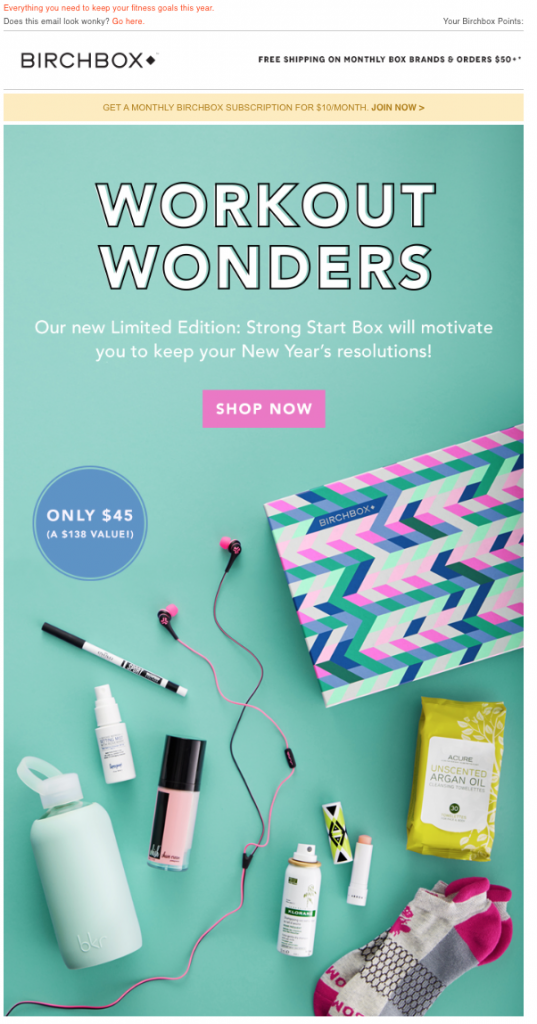
You can also use time-related words like “now,” “instant,” and “fast” to introduce urgency into your email messages.
10. Use social proof to sell on emails
The concept of social proof has existed since the beginning of human beings. Our ancestors learned important survival skills by emulating and imitating each other.
For example, you see a restaurant with zero reviews on Yelp. Then you see another restaurant with hundreds of reviews on Yelp.
Which restaurant are you likely to go?
I have no doubt that it’s the restaurant with lots of reviews.
Social proof has a huge influence on what we buy and who will buy from.
Digital marketers use social proof on almost every marketing channel, and email is not an exception.
Your email marketing messages is a powerful channel to use social proof too.
Amazon uses email messages as another opportunity to collect more ratings and reviews from their customers.
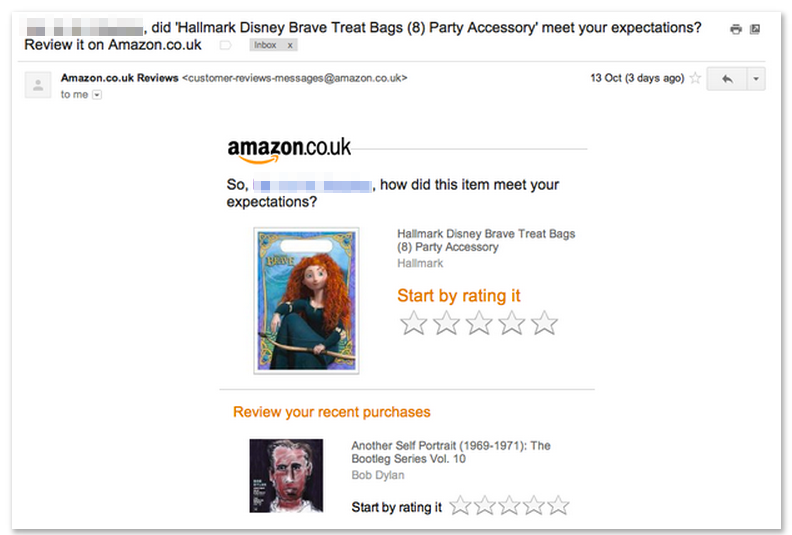
They know how important those ratings and reviews are on their platform.
You can use social proof to collect more emails from your blog.
For example, HelpScout tells you how many people receives emails from them. 72,000 people can’t be wrong.
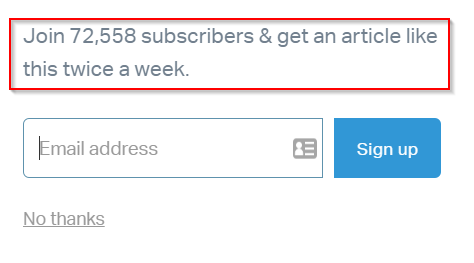
Once you build your email list to a certain good number, you should start using it as a social proof on your website.
Another way to use social proof is to share customers’ success stories with your subscribers on email.
It tells subscribers who are still on the fence that people are getting real results using your product. This increases their confidence in your product’s ability to give them results too.
11. Use cliff-hangers
Cliffhangers are mostly used in movies and fiction books.
But smart digital marketers are starting to tap into the power of cliffhangers.
What is a cliffhanger?
Here’s how Wikipedia defines it:
“A cliffhanger or cliffhanger ending is a plot device in fiction which features a main character in a precarious or difficult dilemma, or confronted with a shocking revelation at the end of an episode of serialized fiction.”
Cliffhangers are what happens at the end of a book chapter, or an episode that leaves you in suspense.
TV stations use it to keep you seated and not touch that dial.
To make a subscriber open your next email and be excited to open the next and next ones, you need cliffhangers.
If subscribers are not feeling excited to open your emails, it will be difficult to keep them as active subscribers for a long time.
Brian Dean is a master user of cliffhangers.
Here’s an email where he used it at the end of the message:
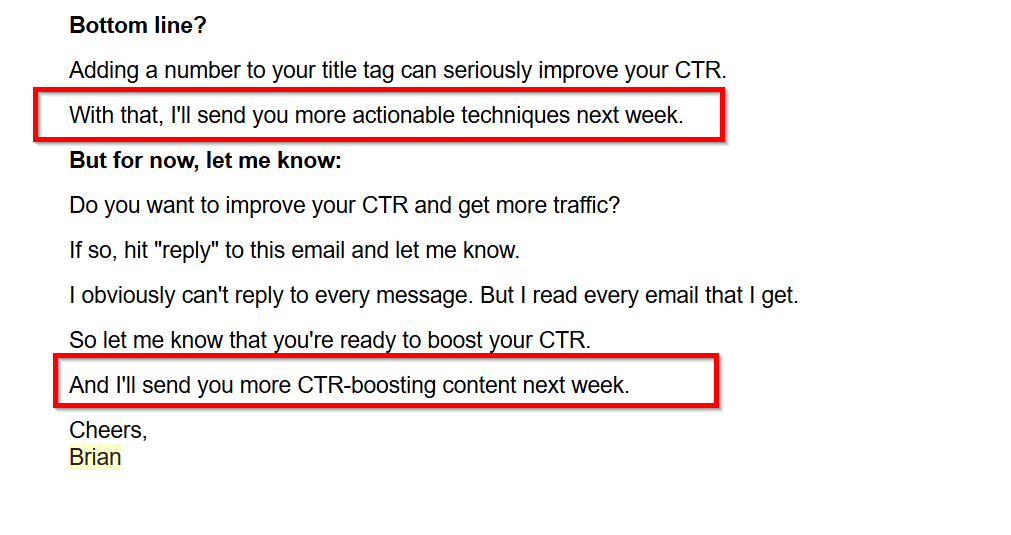
It helps keep his subscribers excited for the next email from him.
12. Write inviting welcome emails
When someone subscribes to your email list, you should welcome them with an inviting message.
The welcome message is like the first impression of how you’ll treat them through emails. If you don’t treat them amazingly right the first time, you risk getting ignored when you start sending messages.
You need to make your welcome message have a lasting impression on new subscribers.
Here’s the first email I received from Noah Kagan of Okdork:

San Francisco dance school, ODC welcomes new subscribers by giving them a new student special deal.
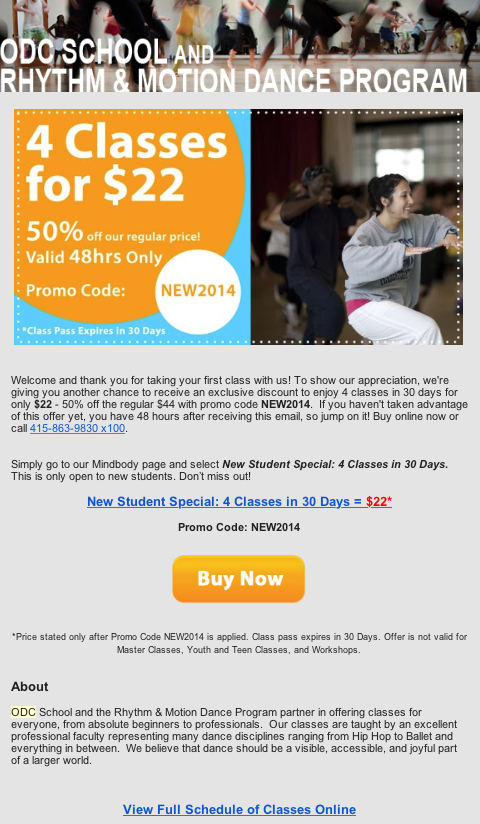
Overstock uses their welcome email to give you a 10%-off coupon.
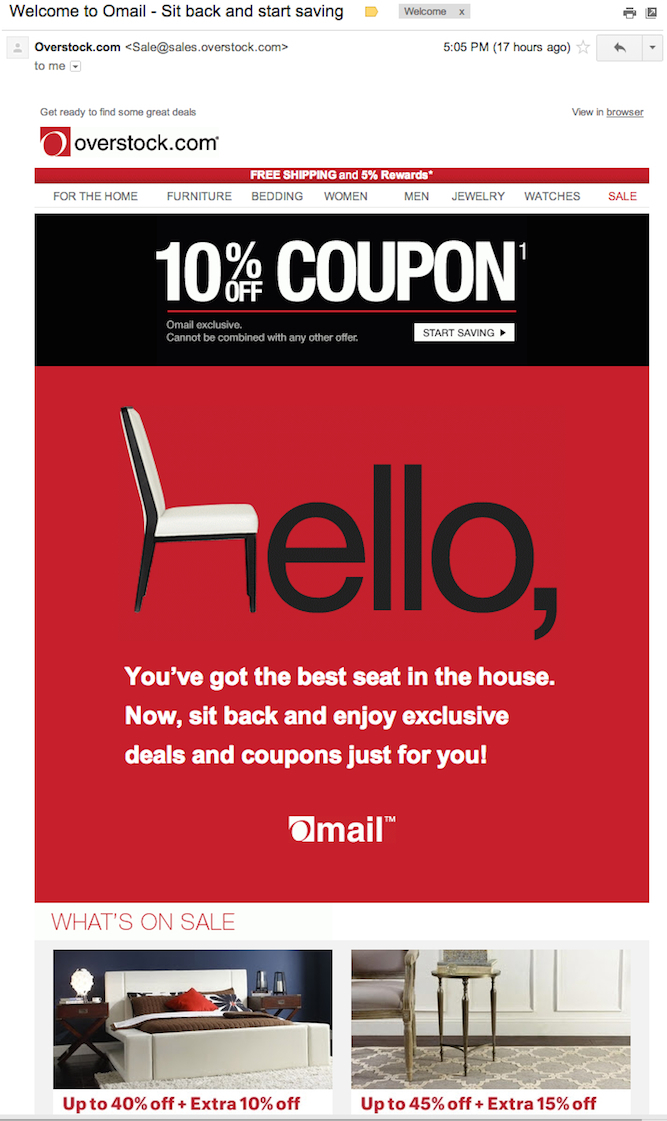
Think of something valuable you can use to welcome new subscribers to your email list.
13. Use one call-to-action in each email
A call-to-action (CTA) is the button or link you put inside your email that asks prospects to buy your product or start a free trial.
CTAs can be anything like “Buy Now,” “Click here to get this now,” “Click here to tell me in the comments,” “Browse Catalog,” or “Get a free consultation.”
Conversion, revenue, and profit all depend on the effectiveness of your CTA.
Your CTA should be appealing to your email subscribers.
How many CTAs should you have per message?
One.
You can repeat the CTA two or three times because people’s attention spans are short.
But when you have different CTAs that ask for different things, it becomes difficult to convert prospects. You won’t be helping subscribers buy your product when you do that.
They would probably become confused on which action to take.
Imagine emailing a busy person and asking them to do many things at the same time. Well, they are unlikely to do anything.
The below email from Topshop has many CTAs.
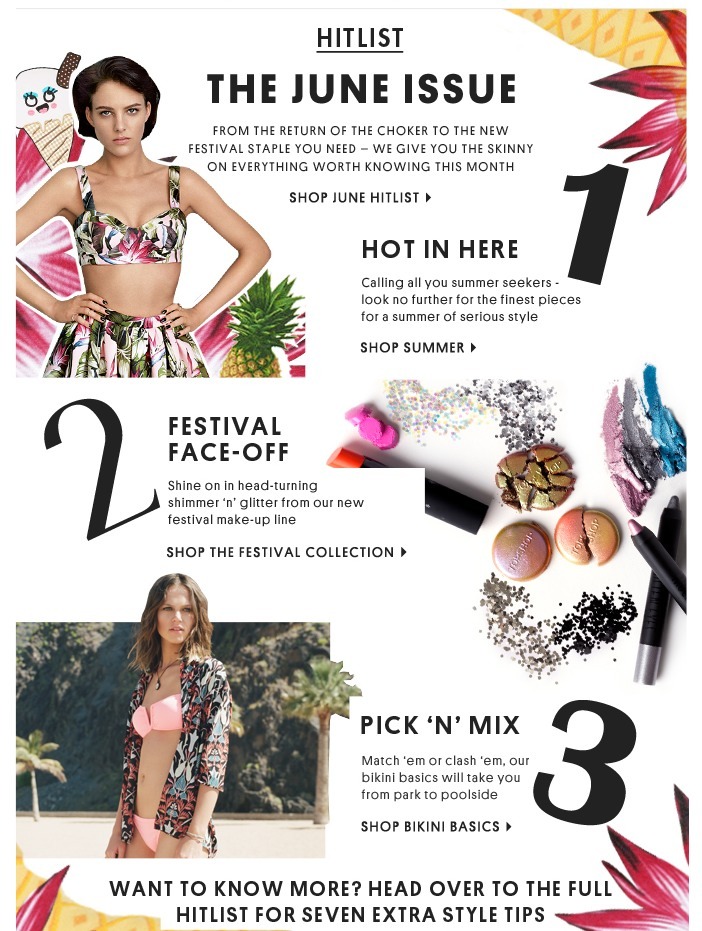
Here’s a better email with just one call-to-action. Shoppers are more likely to respond to this.
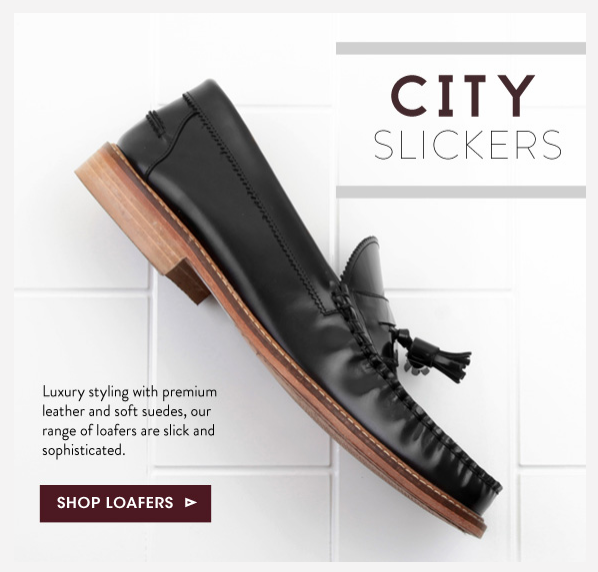
14. Use the word “YOU”
The word “you” is a powerful word. It makes a lot of sense to add it to your emails.
I first learned the secret from Gary Halbert, one of the finest copywriters the world has ever seen.
Gary Halbert used the word “you” to get his direct mails opened.
According to Halbert:
“Everybody in the world divides his mail into two piles which I call the A-Pile and the B-Pile.
The A-Pile contains letters that are, (or appear to be), personal.
The B-Pile contains everything else: Bills, catalogs, brochures, printed announcements, envelopes that obviously contain a sales message, and so on.
Now listen up: The most important thing you can ever do when creating a direct mail promotion is to make sure your letter gets in the A-Pile!”
Use the word “you” if you want subscribers to open your email.
Copyblogger listed it as the #1 in the five most persuasive words in the English language.
You are likely to read emails like this because they feel personalized.
15. Integrate email and social media
Email marketing is even more powerful when combined with social media marketing.
Most of your email subscribers are on social media too. And keep in mind that your competitors are on social media.
Getting on social media to connect with your subscribers gives you an opportunity to build a stronger relationship with them.
People don’t make buying decisions based on the information they get from a single medium. They combine different mediums like email + social media + reviews + blogs + influencers.
Therefore, expanding your connection points with subscribers beyond email is highly recommended.
If you’re publishing on social platforms like Facebook, Twitter, and Instagram, you should ask your email subscribers to follow you there.
Facebook allows you to systematically target your followers and people similar to them through ads.
All you have to do is upload your subscriber lists on Facebook.
Facebook also allows you to collect emails directly from your Facebook Page.
For example, Salesforce uses its Facebook page to collect more emails for its newsletter.
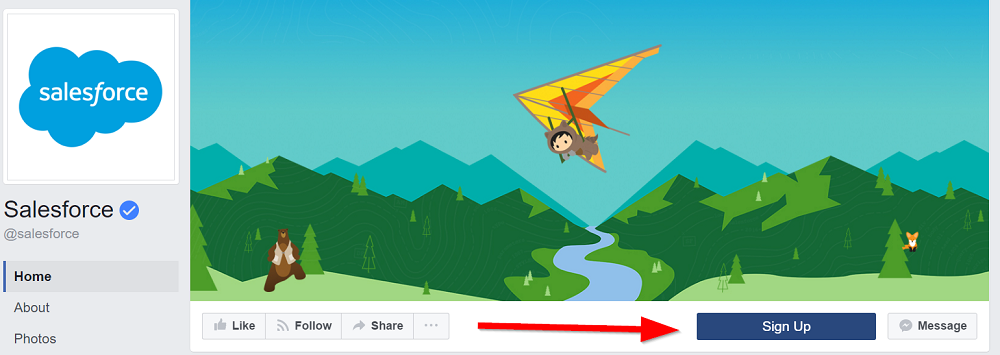
Here’s the page you’ll be taken when you click on the “Sign Up” link on their Facebook page:
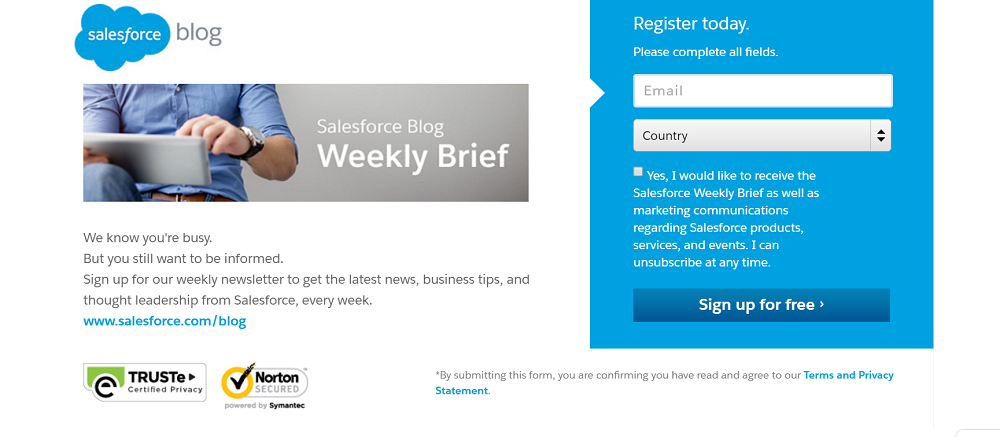
16. Continue getting new emails
According to Corey Dilley, the marketing manager at Unbounce:
“Unbounce’s email list is the biggest asset we have for driving new acquisitions.
Why?
Email marketing consistently generates 80-90% of our landing page traffic when we launch a new campaign, piece of content or product feature.
Email allows us to engage our audience in a creative, personalized way that blog posts or tweets can’t.” – Corey Dilley
Joe Pulizzi, the founder of Content Marketing Institute, confessed that he regretted not building his email list earlier in the process of developing his company.
The emails of prospects and customers are the biggest digital marketing asset any business can have.
Top web companies like Facebook, Amazon, LinkedIn, and Uber rely so much on the emails of their users.
Your email is the only thing you have 100% control over.
Facebook may stop sending you traffic next year.
Google may come up with an algorithm update that penalizes your blog.
Instagram may get beaten by a new competitor, requiring you to build up your profile and reputation on the new platform. That means starting from the scratch all over again.
You don’t own Facebook, Google, Instagram, Twitter, and Pinterest.
Fortunately, you own your email list.
With email, you can always reach out to your dedicated list of fans who care about you and what you do.
But emails get depleted over time.
Some people will stop caring about what you do and write about.
Some people will stop using their emails and create new ones.
And sadly, some people will die.
All these reduce the quality of your list.
If you’d built up a list of 10,000 email subscribers last year, it would be worth less today.
That is why you need to keep getting new emails from time to time.
Never stop building your email list.
The moment you stop, the moment your list starts losing its value.
HubSpot wrote incredible 25 ways to continue growing your email list. I recommend you read it.
17. Send emails at the right time
Getting people to open, click-through and share your emails creates a snowball effect.
It leads to more traffic, more subscribers, and more customer conversions. You can get all these by sending your emails at the right times.
The right times are when your current subscribers are likely to open, read and visit your website. And even share the content with their network on social media.
According to CoSchedule, the best times to send emails are 6:00 am, 10:00 am, 2:00 pm, 8:00 pm, 10:00 pm and 12:00 pm.
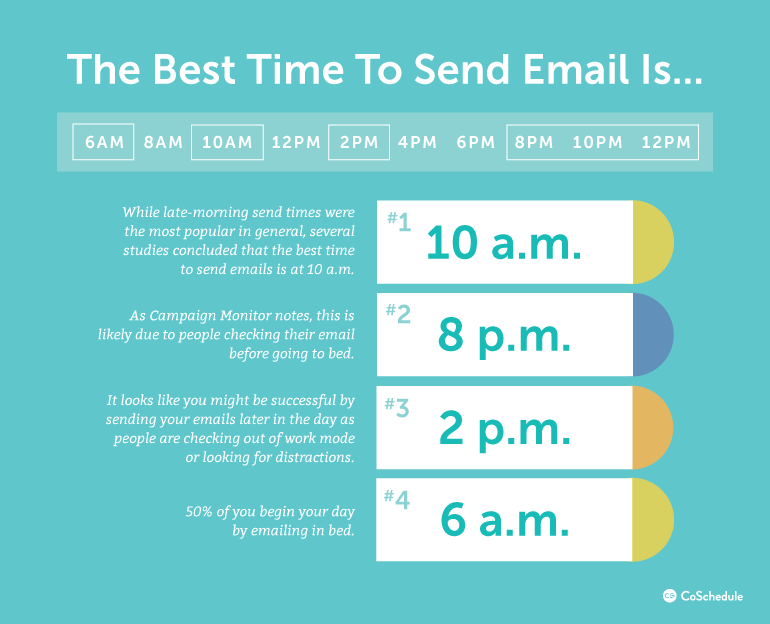
Don’t just send emails during these times. Test other times too and analyze the opens, click-throughs, and visits you got.
Conclusion
Email marketing still works because email remains the best medium to reach and connect with customers in a personal way.
Almost every internet user has an email. It’s free and does not incur charges like texting.
Using these email marketing tactics will help you increase the numbers of sales you generate.
Thanks for reading.
Related articles: lead generation techniques, grow your email list, best email services

Great article. Mainly I like the segmentation part of this article.